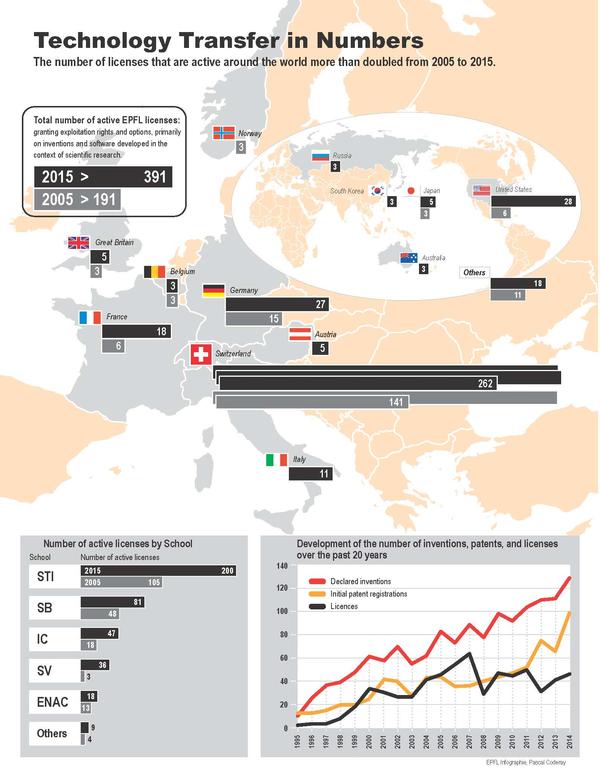EPFL has chalked up 100 inventions per year over the past decade

1500e inevtion: the final step in a microscope capable of providing three-dimensional high-resolution images of functioning cells in the human body.© 2015 Alain Herzog
EPFL's Technology Transfer Office evaluated twice as many inventions between 2005 and 2014 than it did during the prior decade. And this year, EPFL has recorded its 1,500th invention.
The number of inventions evaluated by EPFL's Technology Transfer Office (TTO) has shot up in recent years. 950 inventions were submitted between 2005 and 2014 versus 450 between 1995 and 2004. The number of patent filings has increased in similar proportions, rising from 256 between 1995 and 2004 to 539 between 2005 and 2014. This increase is due in part to EPFL's growth. But for Gabriel Clerc, head of the TTO since it was created, this rise can also be attributed to a growing awareness among researchers of the importance of gaining market recognition for their ideas and research results.
Over half of licenses are used by Swiss SMEs
Of the 1500 inventions filed so far with the TTO, around 40% have been or will be put to commercial use through a license agreement with a start-up or existing company. The number of innovations currently being used by companies in the form of licenses is also twice as high now (391) as in 2005 (191). More than half of these rights were assigned in recent years to Swiss companies with fewer than 250 employees. “It is gratifying to see that most of our license agreements are with Swiss start-ups and small businesses,” said Mr. Clerc. “These companies are a major contributor to the strength of our economy and employment levels both regionally and nationwide.”

Some of EPFL’s inventions enjoy widespread use around the world. One of its first inventions to experience widespread industrial success – Reymond Clavel’s Delta robot – was created 30 years ago. It is used by many companies and is commonly found in a number of sectors, including the rapid manipulation of small objects, watchmaking, remote surgery, measurement systems and material processing. Another major invention managed by the TTO is none other than Michaël Grätzel’s famous dye-sensitized solar cells. They have spawned many research projects and patents, not to mention industrial applications and improvements, since the end of the 1980s.
Invention number 1500: a microscope for seeing cells in vivo
“The most important thing for me is to form a solid team with the researchers for each invention,” said Mr. Clerc. “Nothing can be done without their expertise and enthusiasm.” Christophe Moser and Demetri Psaltis, both professors at EPFL, have indeed benefited from this precious teamwork. EPFL’s 1500th invention, which they recently filed, is the final step in a microscope capable of providing three-dimensional high-resolution images of functioning cells in the human body. These cells are smaller than a micrometer. Four years of research, in conjunction with Harvard Medical School, culminated in five patent filings for this device, which represents a major advance in the areas of medicine and microbiology. Potential uses include, for example, observing cells in the inner ear to determine whether an implant is working, and studying a functioning neuron.
This imaginative animated short film, produced by two young graphic designers, shows the various steps in the technology transfer process from the perspective of the invention itself.